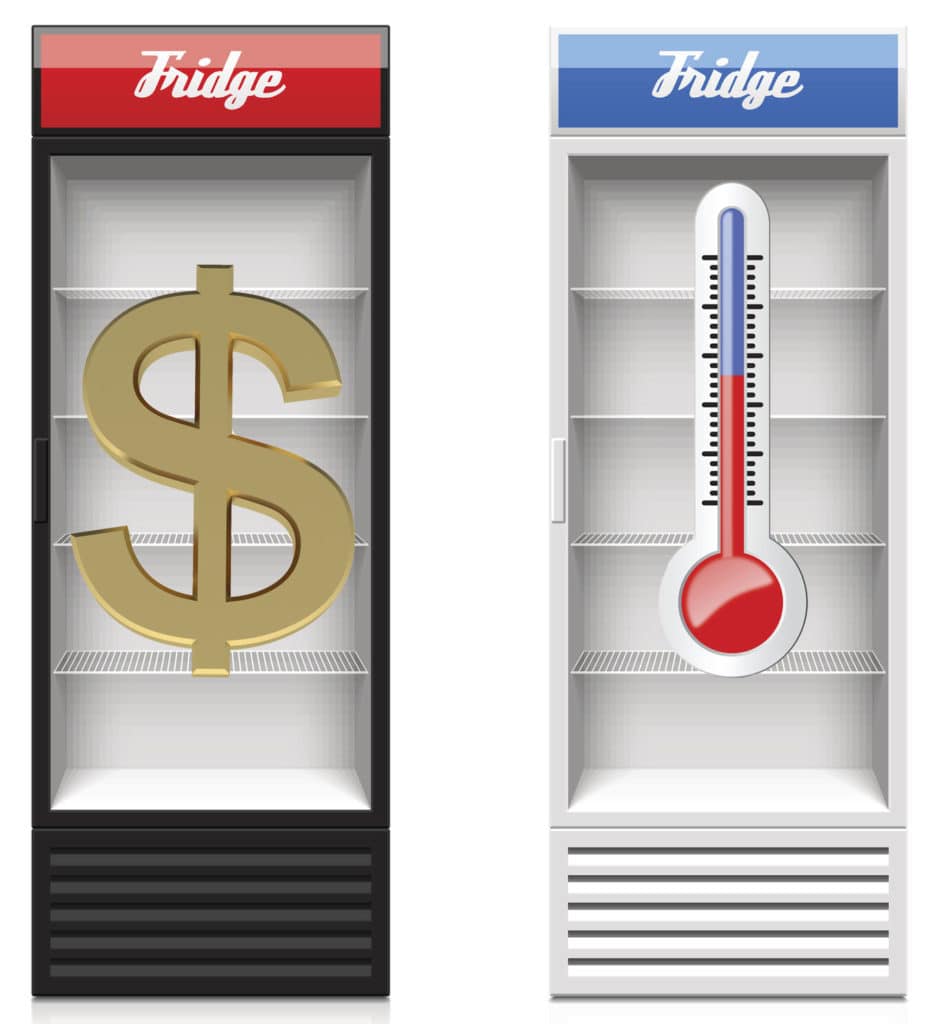When was the last time you did the math on the dollars worth of infusion medication inventory in your practice? If you’re like most providers, you likely have 10’s to 100’s of thousands of dollars of temperature controlled inventory occupying the very small and fragile square footage of your infusion center refrigerator. In this post, we are discussing some of the practical steps that providers can take to minimize loss and properly monitor temperature controlled medications in their offices.
At one point in the not so distant past, I was responsible for a daily inventory of over $1.2 million dollars of biological and specialty medications. Much of that value was in the form of refrigerated vials, stored in various Infusion Centers across the state in 10 different refrigerators. The thought of losing a few hundred thousand dollars of medication was something that routinely robbed my sleep and peace of mind. After a few near misses involving Texas lightning storms, clumsy janitors, and failed equipment, I began to get serious about a robust refrigeration and monitoring solution.
Below we will talk about the points we believe you should consider when buying or upgrading your infusion medication refrigerator. Let us first establish that the medication refrigerator should be a single purpose appliance in your office. This fridge should never be used to store food, drink, or any other thing that is not medication. Having said that, below are some points you should consider when making your medication refrigeration selection.
WHICH REFRIGERATOR TO BUY?
It seems crazy that anyone would consider storing over $10,000-100,000+ of medications in an appliance worth less than $1,000, but that is the reality today for many providers across the country. I have seen upwards of $250,000 of specialty medications crammed into a college dorm fridge that cost around $90. I am not suggesting that one should go out and buy the latest Cadillac of medication storage. It’s true that there are specialized laboratory refrigerators that can cost an office up to $50,000. What we are looking for is the right combination of affordability and reliability.
SIZE AND LOCATION CONSIDERATIONS
Buy a fridge with enough room to hold all your temperature controlled medications when you are at maximum inventory. Typically, there is a time in the year when your medication inventory is at its highest levels. Use those max levels, and add a little room for growth to estimate your size needs.
Refrigerators need airflow to work correctly and maintain an even temperature throughout the box. If you cram the entire fridge full of medication and don’t allow some room between the vials, boxes, and walls you will inevitably have colder and warmer spots within that can cause undesired temperature variations. We once had a situation in which we actually froze a liquid vial due to the micro-climate created when we overloaded one fridge at a location.
When looking at size, you must also consider the location in your office available for the refrigerator. If you are planning on putting the refrigerator under the counter, be sure you select a model that is designed for that kind of installation where the heat can vent out through the front of the unit and you have allowed for adequate airflow recommended by the manufacturer.
QUALITY CONSIDERATIONS
Consumer Grade Refrigerators
As a baseline for the discussion, let’s just say that quality starts with the brand. At a minimum, if you decide to buy a consumer or semi-industrial grade unit. Put simply, stick with brands you know. I recommend the old stand-by’s like Kenmore, Whirlpool, GE, Samsung, etc. if you go the consumer route. In addition to the brand, it pays to always buy on the higher end of these brands model lines as they tend to be built with better components that are more reliable in the long run.
Most office Infusion Centers don’t need the refrigerator’s freezer section for medication storage, so the “freezerless” models maximize the available room. Some of these models have wire shelves that are great for airflow, but they make it difficult to stand up small vials. In some of our locations, we had clear sheet plastic cut to create shelf space in these situations and keep small vials from slipping through the wire shelves. My personal favorite model on the consumer quality end was this Kenmore Freezerless model from Sears.
Bear in mind, these consumer grade refrigerators don’t have the redundancy, reliability, accuracy, or monitoring that are available with laboratory grade refrigerators. That is not a terrible issue as long as you have the right monitoring equipment and procedures to go with it. We will talk more about that in a later post.
Laboratory Grade Refrigerators
If you are considering a higher end laboratory grade fridge, there are plenty of reasons to do so. To start, these units are purpose-built to be more reliable and provide a more constant temperature throughout the box using better insulation and microprocessor temperature controls. Many of these lab grade units also have useful features like glass doors, sliding shelves and trays for easy access, high floor clearance with wheels, and built-in alarms and monitoring.
Be prepared to pay a premium price for lab grade refrigerators. Although quality under-counter models in the 4.0-5.0 cu.ft. sizes can be found starting around $1,500, more standard size freezerless models in 15-17 cu.ft. start around $2,200 and go up to $10,000 for larger and more featured units. You should also note that you can’t grab these at the local appliance store so you will need to factor the additional shipping and handling cost into your cost estimates.
If you have the extra cash or you are upgrading your equipment for the long haul, laboratory grade models are a very nice addition to your infusion operation. Don’t overlook the importance of glass doors and slide out medication trays. These convenience features do actually help the staff make better decisions and reduce error when selecting medication inventory for your patients.
MONITORING AND TEMPERATURE LOGGING
Outside of the obvious concern of total loss of these expensive medications, there is also the necessity of temperature monitoring and logging. The CDC has a great chapter on Vaccine Storage and Handling that provides a very thorough overview of this topic here: CDC Storage and Handling
In short, the CDC recommends checking and logging temperatures at least 2 times a day and having a plan in the event of a power outage or equipment failure. That is solid advice, but it is a far cry from helping your office design and implement a sustainable medication storage and temperature monitoring strategy.
Whether you are working with the $500 or $5,000 refrigerator, you will need to consider your temperature monitoring options. In general, if you went with the laboratory grade option, you will already have some kind of digital temperature control, low/high temp alarms, and possibly some built-in data logging. Even with those built-in features, it makes practical sense to look at a separate monitoring system so you are prepared for the unknown.
In our next article, we will discuss the types of monitoring systems available and the features you should consider when putting together a complete temperature monitoring and logging solution for your practice. Please write us and let us know how your practice or Infusion Center handles the storage and monitoring of your medications and we will share your ideas with our readers.




